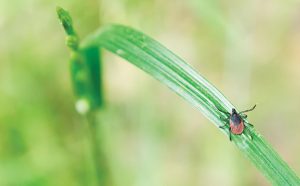
Photo: iStock.com/Kerrick
The spring of 2020 has successfully taught the public the necessity of keeping our distance from one another during a pandemic. Maintaining a 6-foot “social distance” from one another when in public spaces has become the new normal.
Unfortunately, the pests that our industry works hard to control don’t always adhere to the same rules. You might have heard that “Wherever you are, a spider is not more than 3 feet away.” That’s not true; the distance you are from a spider largely depends on where you are located. If you are in a field, they are likely very close. If you are in a parking lot, probably not so much. But more important than spider proximity is the threat of bloodmeal-seeking ticks.
Now that daytime temperatures across much of the country are reliably above 50° Fahrenheit, ticks are active and seeking out hosts. At press time, there is zero evidence that ticks or other pests play a role in the transmission of the COVID-19 virus, but they remain the most important vector of arthropod-borne disease in the United States.
Nearly 30,000 cases of Lyme disease are reported to the Centers for Disease Control and Prevention (CDC) each year, a number that is estimated to be up to 10 times higher thanks to under-reporting. Ticks are commonly encountered in the overgrown borders of yards, and the edges of paths through natural areas. These transitional zones, called “ecotones,” are where ticks wait for an unsuspecting meal to walk by.
Pest management professionals often find themselves in these “tick zones” when performing control activities, so it is prudent to wear an effective repellent. For a list of U.S. Environmental Protection Agency-registered products, and tips on how to prevent tick bites, visit CDC.gov.
By protecting yourself, you are able to serve and protect your clients when they need you most.
Leave A Comment